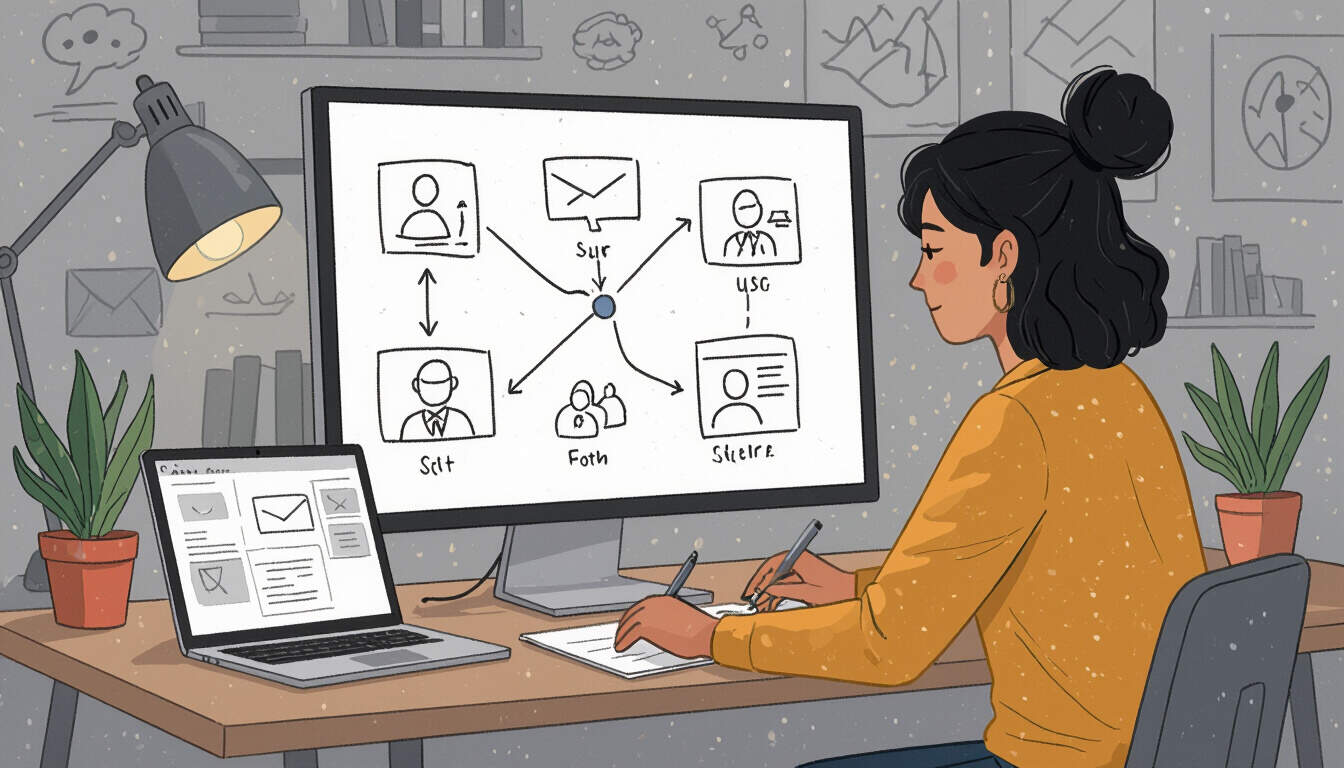Customer Journey Mapping for Solo SaaS Success
 by Shanie Goodwin
by Shanie Goodwin
Explore how customer journey mapping helps solo SaaS builders create better user experiences. This guide covers practical steps, real examples, and tips for improving your SaaS architecture through focused user paths. Ideal for developers working alone on software projects.

Customer journey mapping serves as a key tool for solo SaaS creators aiming to build effective software. It involves outlining the steps users take while interacting with a product. For instance, a solo developer might use this method to visualize how customers sign up and engage with features.
In solo SaaS, focusing on user paths can lead to stronger products. This approach allows builders to identify potential issues early. By examining each stage, entrepreneurs can ensure their architecture supports smooth experiences.
Why Focus on User Paths in Solo SaaS
One main reason is improving retention rates. Users who encounter fewer obstacles are more likely to stay engaged. SaaS architecture benefits from this by becoming more intuitive. Real examples show that simple adjustments, like streamlining onboarding, can make a big difference.
Consider a solo builder creating a project management tool. They might map out the initial setup process. This helps in spotting where users drop off. Another advantage is gathering feedback efficiently. Without large teams, mapping offers a straightforward way to prioritize changes.
Step-by-Step Guide to Creating a User Path Map
Start by defining your audience. Identify key segments, such as small business owners using your SaaS. Next, list out the main interactions, from discovery to regular use.
- Gather data on user behavior through basic analytics or surveys.
- Sketch the journey visually, perhaps on paper or a digital tool.
- Highlight pain points, like confusing interfaces.
- Brainstorm solutions that fit within your solo SaaS setup.
- Test the map with real users and refine based on results.
This process doesn't require complex tools. A simple drawing can suffice for solo entrepreneurs. For example, one developer used a basic app to map journeys and reduced churn by 20%.
Real Examples in Practice
Take a look at a note-taking SaaS built by an individual. The creator mapped the user flow and noticed that new users struggled with search features. By redesigning the interface, they made the tool more accessible. This change directly impacted satisfaction levels.
In another case, a freelance developer working on a CRM system identified gaps in mobile access. Mapping revealed that users expected seamless transitions between devices. Addressing this improved the overall architecture and led to positive reviews.
Integrating Mapping into Your Workflow
For solo builders, regular updates to user paths are essential. Set aside time each month to review and adjust. Tools like free diagramming software can help without overwhelming budgets.
Remember to keep maps simple and action-oriented. Focus on metrics that matter, such as completion rates for key actions. Over time, this practice can transform how you approach customer journey mapping in your projects.
Tips for Effective Implementation
Use insights from your map to guide development decisions. For instance, if data shows delays in certain steps, prioritize fixes in your next update. Collaborate with beta testers to validate your findings.
In summary, incorporating user paths into solo SaaS efforts provides clear benefits. It fosters better products and happier users, all while fitting within independent workflows. By applying these steps, builders can achieve meaningful improvements.
